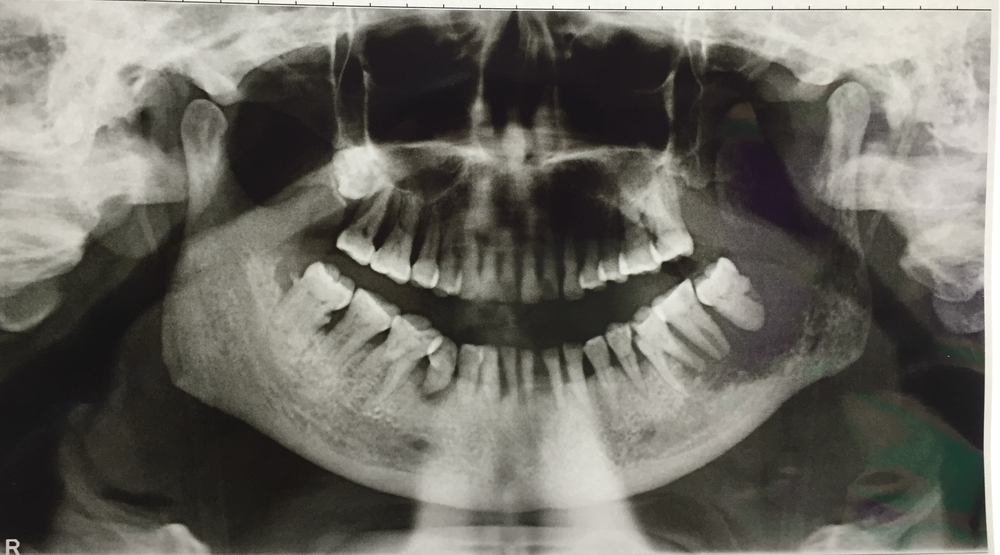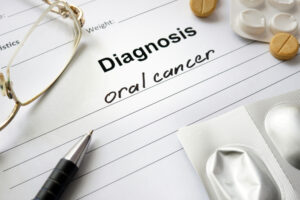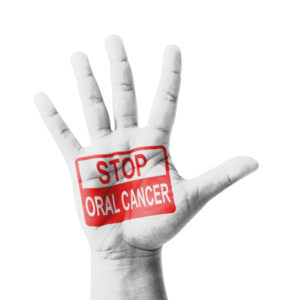Oral cancer is a significant health concern that affects thousands of individuals each year. Raising awareness about its signs, risk factors, prevention methods, and treatment options is crucial for early detection and improved outcomes. Understanding oral cancer can empower individuals to take proactive steps in safeguarding their oral health and overall well-being. In this article, we will delve into the essential aspects of oral cancer awareness, effective preventive measures, the importance of screening, available treatment options, and how to manage risk factors.
What is Oral Cancer? Signs, Symptoms, and Risk Factors
Oral cancer refers to cancers that develop in any part of the mouth, including the lips, gums, tongue, inner lining of the cheeks, roof and floor of the mouth, and the throat. According to the World Health Organisation, oral cancer is one of the most common cancers globally, with approximately 354,864 new cases diagnosed each year.
Signs and Symptoms
Recognising the early signs of oral cancer can significantly improve the chances of successful treatment. Common symptoms include:
- Persistent sores: Ulcers or sores in the mouth that do not heal within two weeks.
- Pain: Ongoing pain in the mouth, lips, or throat.
- Lumps: Unexplained lumps or thickening in the cheek or neck.
- Difficulty swallowing: Trouble swallowing or a feeling that something is stuck in the throat.
- Changes in voice: Hoarseness or other voice changes.
- Unexplained bleeding: Bleeding from any part of the mouth without an obvious cause.
Risk Factors
Several factors can increase the risk of developing oral cancer:
- Tobacco use: Smoking cigarettes, cigars, pipes, or using smokeless tobacco products.
- Excessive alcohol consumption: Heavy drinking significantly raises the risk.
- Human papillomavirus (HPV): Certain strains of HPV are linked to oropharyngeal cancers.
- Sun exposure: Prolonged exposure to the sun can lead to lip cancer.
- Age and gender: More common in men and individuals over the age of 40.
- Poor oral hygiene: Neglecting dental care can contribute to the development of oral cancer.
Understanding these risk factors can help individuals make informed lifestyle choices to reduce their risk.
Preventive Measures for Oral Cancer: Lifestyle and Diet
Preventing oral cancer involves adopting healthy lifestyle habits and maintaining a balanced diet. By making informed choices, individuals can significantly lower their risk of developing this disease.
Lifestyle Choices
- Avoid Tobacco Products: The most effective way to reduce the risk of oral cancer is to avoid all forms of tobacco. Quitting smoking and refraining from using smokeless tobacco products can dramatically decrease your chances of developing oral cancer.
- Limit Alcohol Consumption: Excessive alcohol intake is a major risk factor. Moderating alcohol consumption or avoiding it altogether can help reduce the risk.
- Protect Your Lips from the Sun: Use lip balms with SPF to protect your lips from harmful UV rays, which can cause lip cancer.
- Safe Practices to Reduce HPV Risk: Engaging in safe sexual practices can lower the risk of HPV-related oral cancers.
Healthy Diet for Oral Health
A nutritious diet plays a crucial role in maintaining oral health and preventing cancer. Incorporate the following into your daily meals:
- Fruits and Vegetables: Rich in vitamins, minerals, and antioxidants that help protect against cancer.
- Foods High in Vitamins A, C, and E: These vitamins support immune function and cellular repair.
- Whole Grains and Lean Proteins: Provide essential nutrients for overall health.
Hydration and Oral Health
Staying hydrated is vital for oral health. Water helps rinse away food particles and bacteria, maintaining saliva flow, which naturally protects the mouth from infections and irritations.
Regular Exercise and Overall Health
Physical activity supports a healthy immune system, which can help the body fight off diseases, including cancer. Regular exercise also contributes to maintaining a healthy weight, reducing the risk of various cancers.
Avoiding Risky Behaviors
Reducing the consumption of processed and red meats and limiting sugary and acidic foods can help protect oral tissues from damage and reduce cancer risk.

Screening and Early Detection of Oral Cancer
Early detection of oral cancer greatly enhances the effectiveness of treatment and improves survival rates. Regular screenings and self-examinations are essential components of an effective oral cancer prevention strategy.
Importance of Early Detection
Statistics show that when oral cancer is detected early, the five-year survival rate can be as high as 80-90%. However, if diagnosed at a later stage, the survival rate drops significantly. Early detection allows for less invasive treatments and a higher likelihood of successful recovery.
Dental Exams and Oral Cancer Screening
During routine dental visits, dentists perform thorough examinations of the mouth and throat to identify any abnormalities. Screening involves checking for suspicious lesions, lumps, or discolorations that could indicate cancer. Dentists may use tools like brushes to collect cells for biopsy or employ imaging techniques to assess the extent of any detected abnormalities.
Self-Examination Techniques
Individuals can perform regular self-exams to monitor their oral health:
- Visual Inspection: Look for any sores, lumps, or unusual changes in the mouth, lips, and throat.
- Feel for Irregularities: Gently feel the inside of your cheeks, gums, and tongue for any unusual lumps or thickening.
- Monitor Symptoms: Pay attention to persistent pain, difficulty swallowing, or changes in voice.
When to Seek Professional Help
If you notice any persistent symptoms or changes in your oral cavity, it is crucial to consult a dentist or healthcare professional immediately. Early consultation can lead to prompt diagnosis and treatment, increasing the chances of a favorable outcome.
Advanced Diagnostic Tools
In cases where oral cancer is suspected, advanced diagnostic tools may be used:
- Biopsy: Removing a small tissue sample for laboratory analysis to confirm the presence of cancer cells.
- Imaging Techniques: MRI, CT scans, and PET scans help determine the size and spread of the cancer.
- Molecular Testing: Identifying specific genetic markers to guide targeted therapies.
Role of Dentists in Multidisciplinary Care
Dentists often collaborate with oncologists, surgeons, and other healthcare professionals to create comprehensive care plans for patients diagnosed with oral cancer. This multidisciplinary approach ensures that all aspects of the patient’s health are addressed, leading to more effective treatment and support.
Treatment Options for Oral Cancer: What to Know
Oral cancer treatment depends on the stage and location of the cancer, as well as the patient’s overall health. Understanding the available treatment options can help patients make informed decisions about their care.
Overview of Treatment Modalities
Treatment typically involves a combination of surgery, radiation therapy, and chemotherapy. The specific approach depends on the individual case and the cancer’s progression.
Surgical Treatments
Surgery is often the first line of treatment for oral cancer. The goal is to remove the cancerous tissue and some surrounding healthy tissue to ensure all cancer cells are eliminated.
- Types of Surgeries:
- Partial Resection: Removing part of the affected area.
- Neck Dissection: Removing lymph nodes in the neck if the cancer has spread.
- Recovery and Aftercare: Post-surgery care includes managing pain, maintaining oral hygiene, and following a specific diet to aid healing.
Radiation Therapy
Radiation therapy uses high-energy rays to kill cancer cells. It can be used alone or in combination with surgery and chemotherapy.
- External Beam Radiation: Directed at the cancer site from outside the body.
- Internal Radiation (Brachytherapy): Placed directly into or near the tumor.
Chemotherapy
Chemotherapy involves using drugs to destroy cancer cells. It is often combined with radiation therapy to enhance its effectiveness.
- Systemic Chemotherapy: Drugs are administered orally or intravenously, affecting the entire body.
- Combination Therapies: Using chemotherapy alongside other treatments to target cancer more effectively.
Targeted Therapy and Immunotherapy
Targeted therapy focuses on specific molecules involved in cancer growth, minimising damage to healthy cells. Immunotherapy boosts the body’s immune system to fight cancer more effectively.
- Benefits: These therapies can be more effective with fewer side effects compared to traditional treatments.
- Examples: Monoclonal antibodies and checkpoint inhibitors are common types of targeted and immunotherapies.
Rehabilitation and Supportive Care
Post-treatment rehabilitation is essential for restoring function and quality of life.
- Speech and Swallowing Therapy: Helps patients regain normal speech and swallowing abilities.
- Psychological Support: Counseling and support groups assist patients in coping with the emotional aspects of cancer treatment.
Preventing Recurrence
Preventing cancer recurrence involves regular follow-ups and adopting a healthy lifestyle.
- Long-term Monitoring: Regular check-ups to detect any signs of cancer returning.
- Lifestyle Changes: Maintaining a balanced diet, avoiding tobacco and excessive alcohol, and practicing good oral hygiene.
Choosing the Right Treatment Plan
Selecting the appropriate treatment plan involves considering various factors, including the cancer stage, patient’s health, and personal preferences. Consulting with a team of dental surgeons and healthcare professionals ensures that the chosen treatment is tailored to the patient’s specific needs.
Managing Risk Factors
Managing and mitigating risk factors is a crucial aspect of oral cancer prevention and overall oral health.
Tobacco and Alcohol Use
Reducing or eliminating the use of tobacco products and limiting alcohol consumption are the most effective ways to lower the risk of oral cancer. Support programs and counseling can aid individuals in quitting these habits.
Human Papillomavirus (HPV) Infection
HPV vaccination is a preventive measure against the strains of HPV most commonly linked to oropharyngeal cancers. Safe sexual practices also reduce the risk of HPV transmission.
Sun Protection for Lips
Using lip balms with SPF and wearing protective clothing can prevent lip cancer caused by excessive sun exposure.
Maintaining Good Oral Hygiene
Regular brushing, flossing, and dental check-ups help maintain oral health and reduce the risk of infections and cancers.
Healthy Diet and Hydration
A diet rich in fruits, vegetables, and whole grains provides essential nutrients that support the immune system and protect against cancer. Staying hydrated helps maintain saliva flow, which naturally cleanses the mouth.
Conclusion
Oral cancer awareness and prevention are vital for maintaining oral health and overall well-being. By understanding the signs, symptoms, and risk factors, individuals can take proactive steps to reduce their risk. Adopting healthy lifestyle habits, maintaining a balanced diet, and practicing good oral hygiene are fundamental preventive measures. Regular screenings and early detection significantly improve treatment outcomes, while a variety of treatment options offer hope for those diagnosed with oral cancer.


